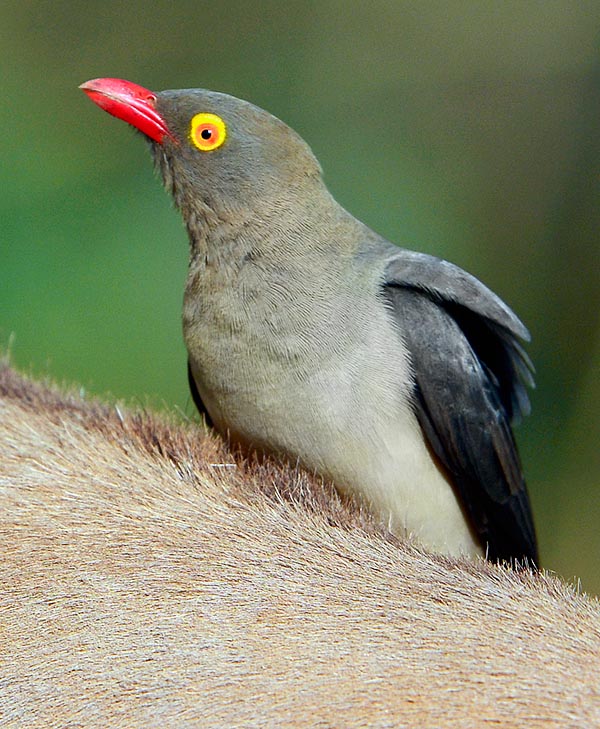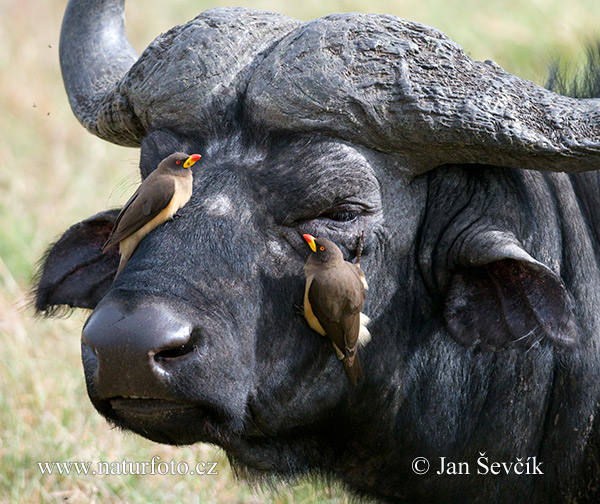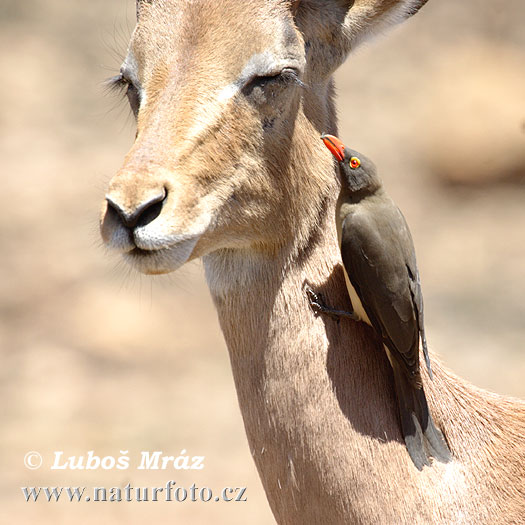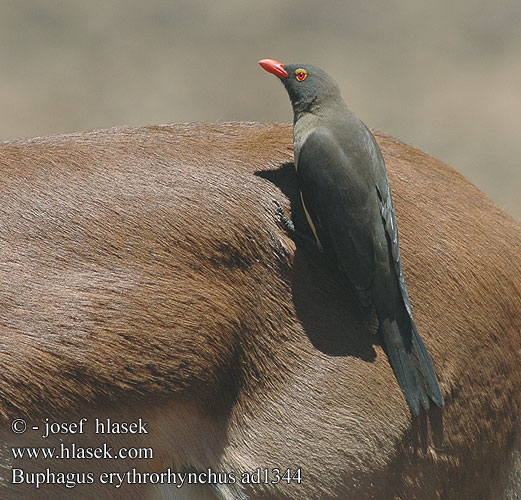The Red-billed Oxpecker: A Closer Look At Buphagus Erythrorhynchus
Share
The Red-billed Oxpecker, scientifically known as Buphagus erythrorhynchus, is a fascinating bird that belongs to the family Sturnidae within the order Passeriformes. This species is notable for its unique ecological role and striking appearance. In this article, we will explore the taxonomy, physical characteristics, habitat, diet, behavior, reproduction, and conservation status of this remarkable bird.

Taxonomy
Buphagus erythrorhynchus is classified under the suborder Oscines and the subfamily Buphaginae. The species was first described by Stanley in 1814 during his travels in Abyssinia. The type specimen is Tanagra erythrorhyncha, and it is important to note that the species has a close relationship with other oxpeckers, particularly in the genus Buphagus. The range of this bird extends across southeastern Sudan, Ethiopia, and Eritrea, reaching south to Bechuanaland and Natal.

Physical Characteristics
The Red-billed Oxpecker is easily identifiable by its vibrant red bill and yellow eye. The plumage is predominantly brown with lighter underparts, which helps it blend into its environment. Adult birds typically measure around 20 cm in length. Their strong legs and claws are adapted for perching on large mammals, which is a key aspect of their feeding behavior.

Habitat
This species thrives in open savannas, grasslands, and woodlands, often found in proximity to large herbivores such as cattle, buffalo, and rhinoceroses. The Red-billed Oxpecker is particularly fond of areas where these animals congregate, as it provides ample opportunities for feeding and nesting.

Diet
The diet of the Red-billed Oxpecker primarily consists of ticks, parasites, and dead skin found on the bodies of large mammals. This feeding behavior not only benefits the oxpecker but also provides a form of pest control for the host animals. The relationship is often mutualistic, as the oxpecker receives food while the mammals enjoy a reduction in parasites.

Behavior
Red-billed Oxpeckers are social birds, often seen in small groups. They are known for their vocalizations, which include a variety of chirps and whistles. These birds are also quite agile, using their strong legs to cling to their hosts while foraging for food. Their behavior is characterized by a high level of activity, and they are often seen fluttering around their host animals.
Reproduction
Breeding typically occurs during the rainy season when food is abundant. The female lays 2-3 eggs in a nest that is often built in tree cavities or among dense vegetation. Both parents participate in incubating the eggs and feeding the chicks once they hatch. The young birds fledge after about three weeks, but they may continue to rely on their parents for food for some time.
Conservation Status
Currently, the Red-billed Oxpecker is not considered endangered, but habitat loss and changes in land use can pose threats to its populations. Conservation efforts aimed at preserving natural habitats and promoting sustainable land management practices are essential for ensuring the continued survival of this species.
Observing the Red-billed Oxpecker
For birdwatchers interested in observing the Red-billed Oxpecker, the best locations are open savannas and grasslands in southeastern Sudan, Ethiopia, and Eritrea. Early morning or late afternoon are ideal times for spotting these birds as they are most active during these periods. Look for them perched on large mammals, where they can be easily seen.
The Red-billed Oxpecker plays a vital role in its ecosystem, serving as both a pest controller and a fascinating subject for birdwatchers and researchers alike. Its unique adaptations and behaviors make it a remarkable species worthy of attention and protection.
In the grand tapestry of avian life, the Red-billed Oxpecker stands out not just for its striking appearance but also for its ecological significance, reminding us of the intricate connections that bind species together in the natural world.